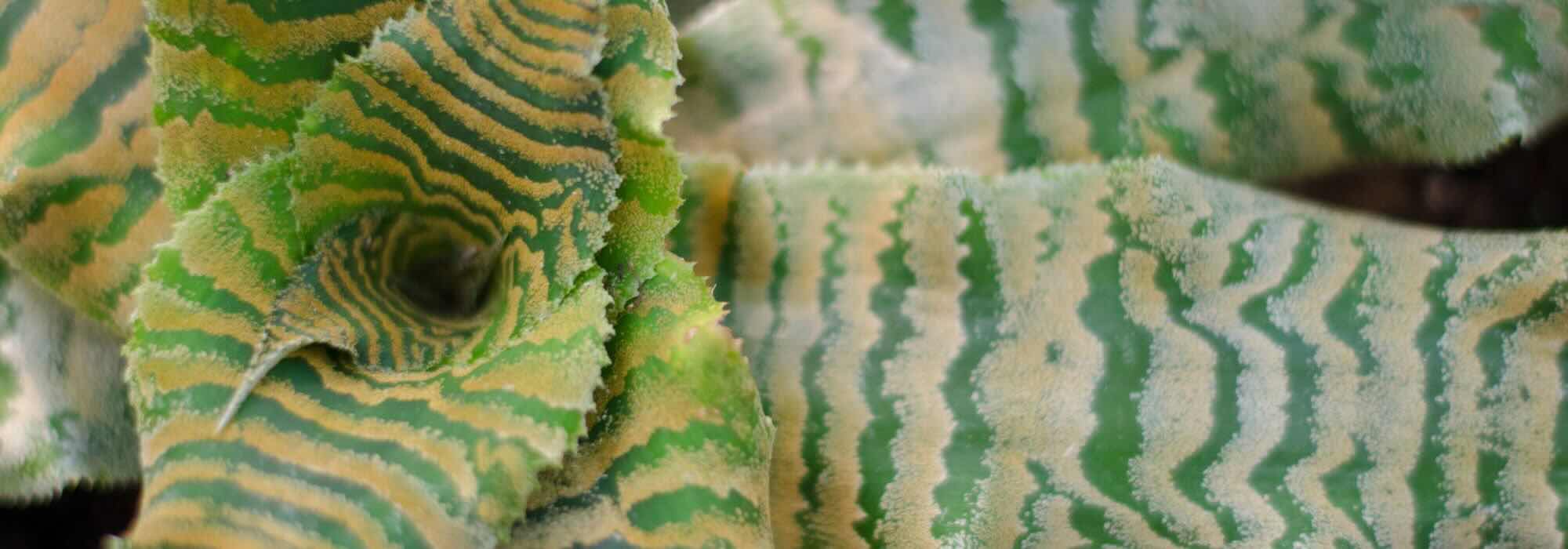
Cryptanthus: Diseases, Parasitic Issues and Common Problems of This Houseplant
Identify, prevent, treat naturally
Contents
The Cryptanthus, nicknamed “starfish plant” due to its graphic shape and spreading habit, is a tropical plant grown indoors in our homes, belonging to the bromeliad family, which determines its specific care requirements. Valued for its highly colourful foliage, like all tropical plants grown in pots, it may encounter certain issues, particularly related to humidity, lack of light or the presence of parasites.
In this article, we’ll review the most common problems a Cryptanthus may face: pest attacks, fungal diseases and physiological disorders related to its environment. Each situation comes with prevention advice and practical solutions to keep the plant healthy and preserve all its decorative beauty.
Fungal Diseases of Cryptanthus
Root Rot
Root rot is one of the most common issues with Cryptanthus, especially when grown indoors. As this plant prefers slightly moist but never waterlogged soil, watering needs to be quite precise. Moreover, Cryptanthus is particularly sensitive to overwatering.
Root rot occurs when the plant is kept in overly wet soil, often due to insufficient drainage or excessive watering.
The early signs are subtle: the outer leaves lose their rigidity, the base becomes soft and may turn black, and an unpleasant odour may emanate from the potting mix.
Prevention and solution:
- If rot occurs, remove the plant from the pot, trim affected parts, and repot in fresh, dry soil.
- Use a light, well-draining potting mix, suitable for bromeliads, containing tropical plant compost, perlite, coconut or pine bark for aeration. Add some sphagnum moss for extra moisture retention if the rest of the mix is light, airy, and well-draining.
- Ensure the pot has drainage holes.
- If your plant already has good soil, space out waterings. Water much less in winter.
Leaf Spots
Leaf spots are often caused by fungi or bacteria thriving in overly humid conditions. They appear as brown or black marks, sometimes ringed with yellow, on the leaves—especially older ones. Poor air circulation or consistently wet foliage are the main culprits.
Prevention and solution:
- Remove affected leaves at the first sign.
- Water the soil directly, avoiding the leaves.
- Space plants apart to improve air circulation.
- Avoid confined or overcrowded environments.
- If misting the plant, ensure the leaves don’t stay wet for too long afterward.
Collar Rot
Collar rot affects the base of the rosette, where the leaves are inserted, and often develops due to excess moisture combined with poor air circulation. It can occur even if the roots appear healthy, especially if water stagnates in the plant’s centre.
The first signs are browning followed by softening of the base, with central leaves detaching easily. At this stage, the plant is often beyond saving.
Unlike other bromeliads, Cryptanthus should not be watered in the leaf rosette but at the base of the soil.
Prevention and solution:
- Remove damaged outer leaves to limit spread.
- Avoid pouring water into the centre of the rosette when watering.
- Maintain good air circulation around the plant.
- Reduce watering frequency during cool or low-light periods.
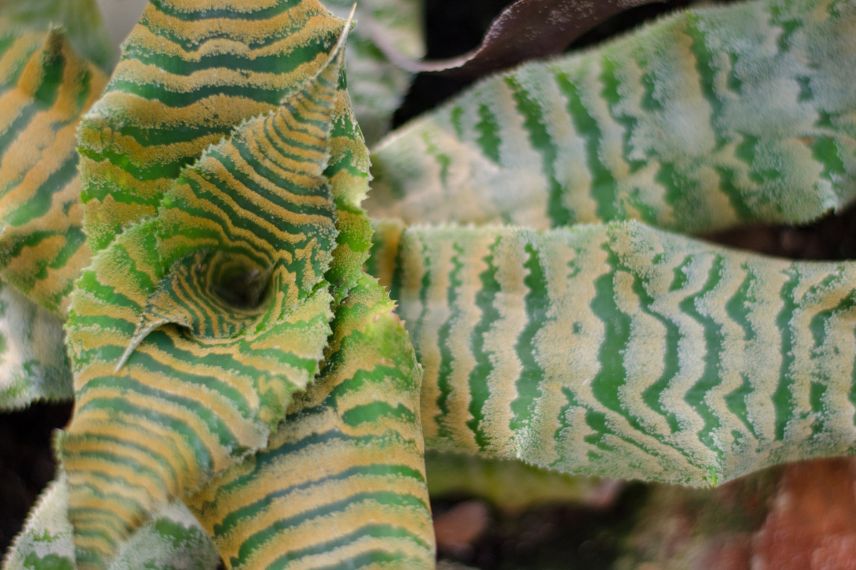
Do not water Cryptanthus in the rosette
Common parasitic pests of Cryptanthus
Cryptanthus can be susceptible to certain infestations when grown indoors, particularly if the air is dry or growing conditions are unbalanced. Parasitic attacks are rarely severe, but early detection and targeted intervention can prevent lasting damage.
Mealybugs
These insects, recognisable by their white, cottony appearance, often settle in the folds of leaves and at the base of the plant. They feed on the sap, causing general weakening and sometimes leaf deformation. Their presence can also encourage the development of sooty mould, a black fungus that grows on the honeydew they secrete.
Prevention and treatment:
- Isolate any infested plant at the first signs.
- Dab affected areas with a cotton pad soaked in 70% alcohol.
- Treat with organic black soap diluted in water, mixed with 1 tsp of the same alcohol and rapeseed oil, once a week until the infestation disappears.
- As a preventive measure, regularly clean the foliage with a damp cloth.
→ Read our guide to learn all about mealybugs.
Spider Mites
Spider mites are only visible under a magnifying glass, but their damage is easily noticeable: leaves become dull, turn greyish, or develop small discoloured spots. In advanced cases, fine webbing may appear between the leaves. They thrive in dry and warm conditions.
Prevention and treatment:
- Rinse the leaves with room-temperature water in the shower to remove mites. Repeat every 4-5 days.
- Maintain good ambient humidity, especially in winter, using a humidifier if necessary.
→ Discover our advice for persistent infestations in our dedicated article.
Aphids
Less common on Cryptanthus, aphids may still appear on young shoots or inflorescences as they develop. They form small green, black, or yellow colonies and excrete sticky honeydew, which encourages other diseases.
Prevention and treatment:
- Rinse the plant to dislodge the parasites.
- Spray lightly soapy water (organic black soap) on affected areas.
- Monitor new shoots closely, as they are the most vulnerable.
→ Read our article on indoor aphids.
Fungus Gnats (Sciarid Flies)
Sciarid flies mainly appear as small black flies hovering around the pot. While the adults are harmless, their larvae can attack young roots if the soil remains constantly moist.
Overwatering or overly compact soil encourages their appearance.
Prevention and treatment:
- Allow the soil surface to dry out between waterings.
- If you can control watering well, place sand or gravel on the soil to prevent egg-laying.
- Use yellow sticky traps or nematodes for larvae in case of an invasion.
→ Explore our guide on sciarid flies for more details.
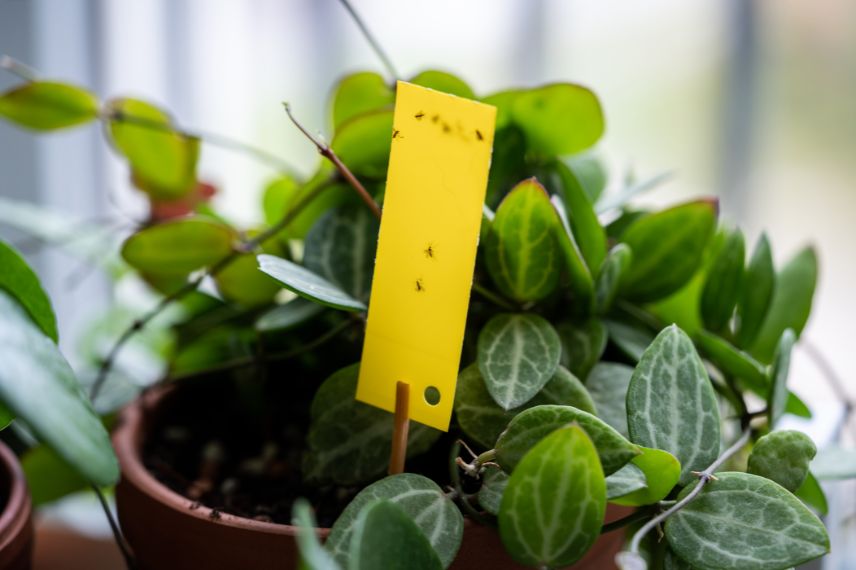
Adult sciarid flies are trapped with yellow sticky strips, but larvae in the soil must also be treated
Common Physiological Problems of Cryptanthus
Even in the absence of parasitic or diseases, the Cryptanthus may show signs of stress due to unsuitable growing conditions. These physiological reactions are generally reversible if their cause is quickly identified. It’s often an imbalance in light, humidity or watering, rather than an actual health issue.
Brown or dry leaves
The appearance of brown tips or dry edges on the leaves is a common issue for Cryptanthus grown indoors, particularly in environments that are too dry. This phenomenon, though benign, indicates discomfort related to ambient humidity or excessive exposure.
Prevention and solution:
- Maintain good humidity levels in the room, especially in winter. Note that the Cryptanthus prefers ambient humidity around 60 to 80%, which is difficult to achieve without a humidifier. Alternatively, it can be placed in a terrarium, a closed environment that provides these conditions.
- Avoid direct sunlight, particularly during the hottest hours.
- Keep the plant away from heat sources or draughts.
Loss of colour
A gradual fading of the foliage, sometimes accompanied by the disappearance of coloured patterns, can occur when the Cryptanthus lacks light. The plant adapts, but at the expense of its natural colouring.
Prevention and solution:
- Place the plant in a brighter location, without direct sunlight.
- Ensure the soil remains sufficiently nutritious to support growth.
- Avoid infrequent repotting or depleted substrates.
Soft or wilted leaves
When leaves lose their firmness, it usually signals a watering issue. This could be due to overwatering or underwatering, or an unsuitable substrate.
Prevention and solution:
- Adjust watering frequency according to the season and temperature conditions.
- Allow the top layer of soil to dry out between waterings.
- Use a well-draining mix to prevent water stagnation.
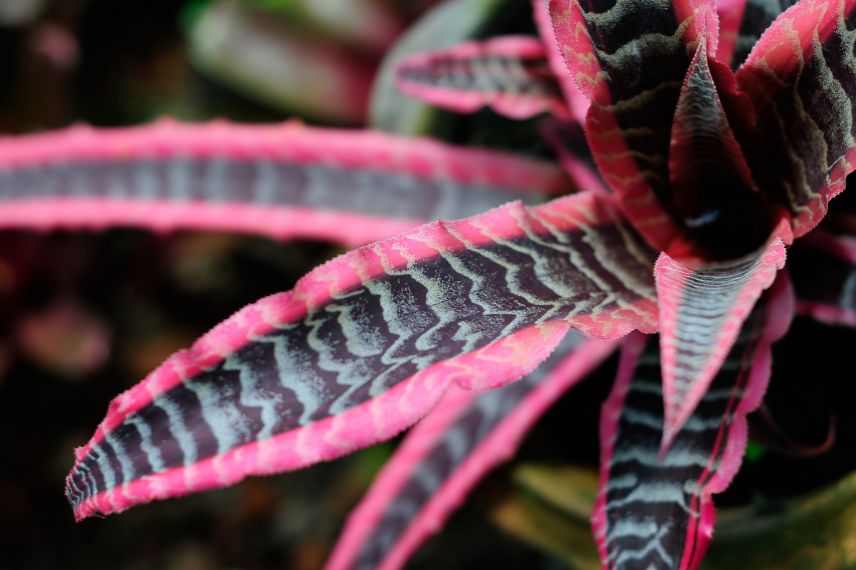
Give your Cryptanthus plenty of light to maintain its beautiful colours
- Subscribe!
- Contents
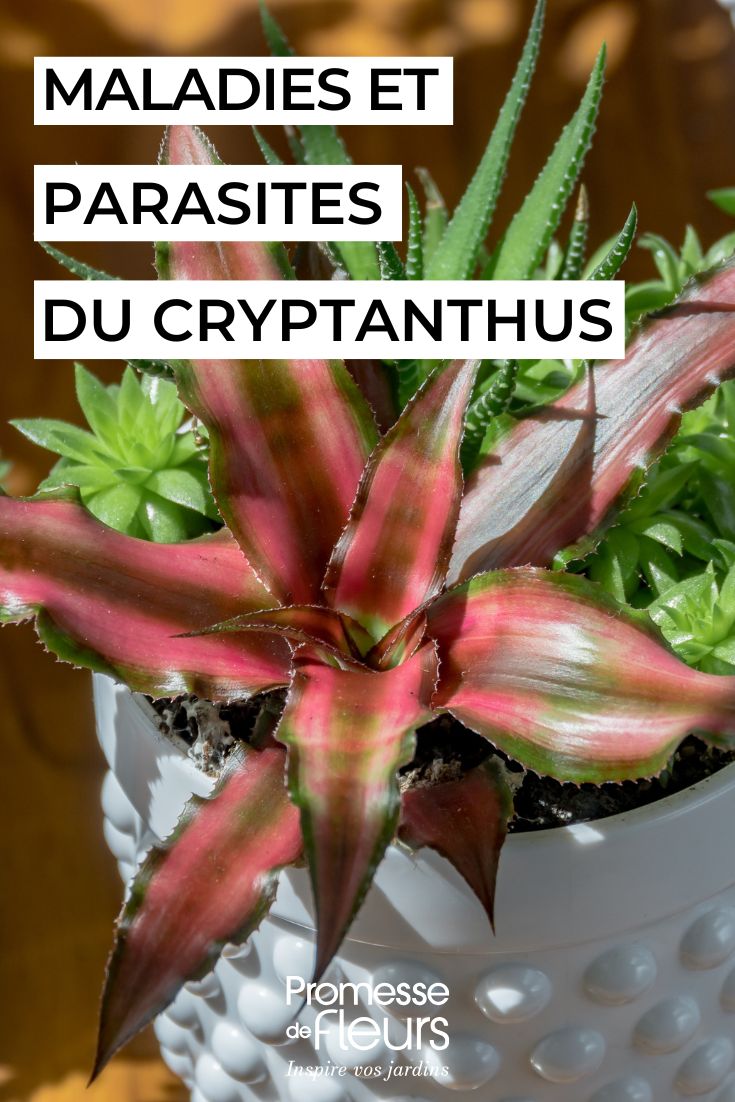































Comments